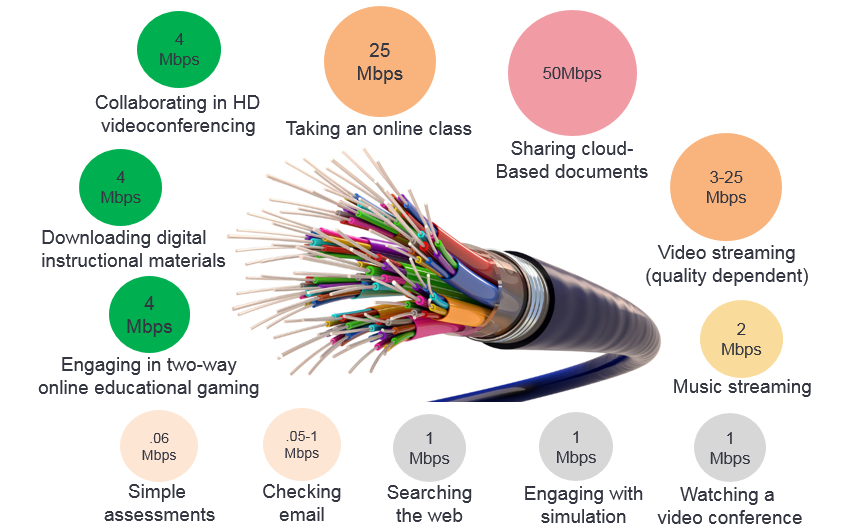How to Ensure Your K12 Broadband Network Makes the Grade
As I discussed in my last blog, 3 Classroom Trends Impacting Your Broadband Network, the evolution in learning models is having a major impact on broadband networks. As little as a decade ago, teaching relied mainly on traditional textbooks and single-sourced instructional content. The broadband network was focused primarily on administrative functions and support for a handful of computers.
Today, multimedia and digital curriculums along with increased use of connected devices are causing significant usage spikes. In addition, students now require 24x7 access to educational content and instructional applications. In the near future, it’s a given that many school districts will deploy more interactive, virtual, and predictive educational systems. Yet in this emerging, flexible, “always-on” environment, how do you know if you’ll have enough bandwidth to support district growth and ultimately, the success of your students?
"In this emerging, flexible, 'always-on' environment, how do you know if you’ll have enough bandwidth to support district growth and ultimately, the success of your students?"- Daniele Loffreda, State/Local Government, Education & Healthcare Industry Advisor at Ciena
Digital educational technology applications and the proliferation of mobile devices are causing many district network managers to question the ability of their current Internet access connections and Wide Area Networks to keep up. In fact, annual bandwidth demand for K12 broadband networks is projected to grow up to 50% year-over-year1.

Sample bandwidth needs by application2
On top of the growing bandwidth demand for educational applications, broadband network managers are experiencing mounting competition for bandwidth from administrative applications. New “smart” administrative applications such as Building Automation and Control Systems, Intelligent Transportation Systems for district fleets, WI-FI enabled buses, and student information systems are causing degrees of unpredictability in what used to be fairly constant traffic flows. When these more erratic and fluctuating educational applications are added, it’s no wonder that districts are experiencing an increase in unplanned network outages.
How much is enough?
The amount of bandwidth you need depends on a few key factors:
- Enrollment size of the student population
- Number of schools in the district, and their distance from district headquarters/primary data center
- Ed Tech adoption plan
- Specific school needs. Elementary, middle and high schools may have different needs. High schools will tend to have more mobile devices and more educational technology bandwidth needs.
The State Educational Technology Directors Association (SETDA) also appears to have recognized Internet access and district WAN differences between small, medium, and large size districts. The Broadband Imperative II minimum Internet access recommendations for school year 2017-2018 range from 100Mbps for small districts to 3Gbps for medium size districts and 7Gbps for large size districts2. The bandwidth capacity that is best for your school district will vary based on these factors.
When thinking about your network needs, consider your “ilities”.
- Cost Predictability: How important is cost predictability to your budget planning?
- Capacity & Scalability: How important is scalability to your ed tech plans?
- Reliability & Availability: How critical is the performance of your network to delivery of education?
- Flexibility & Manageability: How quickly do you need to respond to changing user demands?
- Security & Redundancy: Is data security a priority?
What are your options?
Luckily, a menu of solutions exists. In fact, recent E-rate funding changes have created an unprecedented and potentially short term opportunity to create the next generation K12 broadband network. Today, there are three basic options for your broadband network:
- Traditional Managed (Lit) Service
- Leased Dark Fiber with Management Services
- Self-Provisioned Private Networks
Options are good, but evaluating all your available choices isn’t always easy. Want to find out more about your options? Watch our recent Ciena and Education Superhighway webinar, Creating a Digital Learning Foundation, to hear more about broadband network options and resources to help you decide.
Sources:








